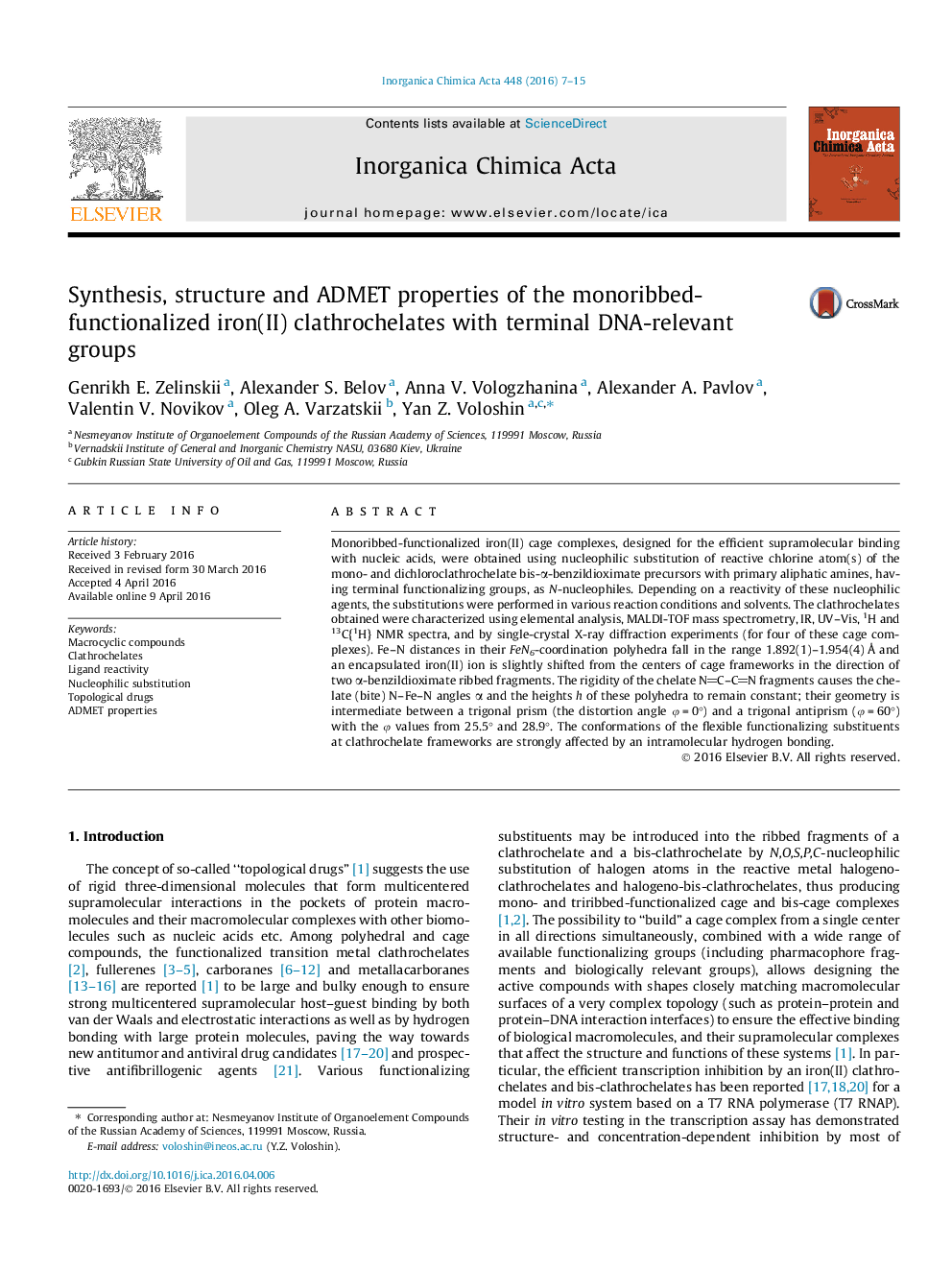| کد مقاله | کد نشریه | سال انتشار | مقاله انگلیسی | نسخه تمام متن |
|---|---|---|---|---|
| 1306368 | 1499141 | 2016 | 9 صفحه PDF | دانلود رایگان |

• Iron mono- and dichloroclathrochelates undergo substitution with functionalized amines.
• Nucleophilic substitution gave the clathrochelates with terminal DNA-relevant groups.
• Conformations of amine substituents are affected by intramolecular hydrogen bonding.
Monoribbed-functionalized iron(II) cage complexes, designed for the efficient supramolecular binding with nucleic acids, were obtained using nucleophilic substitution of reactive chlorine atom(s) of the mono- and dichloroclathrochelate bis-α-benzildioximate precursors with primary aliphatic amines, having terminal functionalizing groups, as N-nucleophiles. Depending on a reactivity of these nucleophilic agents, the substitutions were performed in various reaction conditions and solvents. The clathrochelates obtained were characterized using elemental analysis, MALDI-TOF mass spectrometry, IR, UV–Vis, 1H and 13C{1H} NMR spectra, and by single-crystal X-ray diffraction experiments (for four of these cage complexes). Fe–N distances in their FeN6-coordination polyhedra fall in the range 1.892(1)–1.954(4) Å and an encapsulated iron(II) ion is slightly shifted from the centers of cage frameworks in the direction of two α-benzildioximate ribbed fragments. The rigidity of the chelate NC–CN fragments causes the chelate (bite) N–Fe–N angles α and the heights h of these polyhedra to remain constant; their geometry is intermediate between a trigonal prism (the distortion angle φ = 0°) and a trigonal antiprism (φ = 60°) with the φ values from 25.5° and 28.9°. The conformations of the flexible functionalizing substituents at clathrochelate frameworks are strongly affected by an intramolecular hydrogen bonding.
Nucleophilic substitution of the bis-α-benzyldioximate mono- and dichloroclathrochelate precursors with primary aliphatic amines, having terminal functionalizing groups afforded a series of the monoribbed-functionalized iron(II) clathrochelates with terminal DNA-relevant group(s).Figure optionsDownload as PowerPoint slide
Journal: Inorganica Chimica Acta - Volume 448, 1 July 2016, Pages 7–15